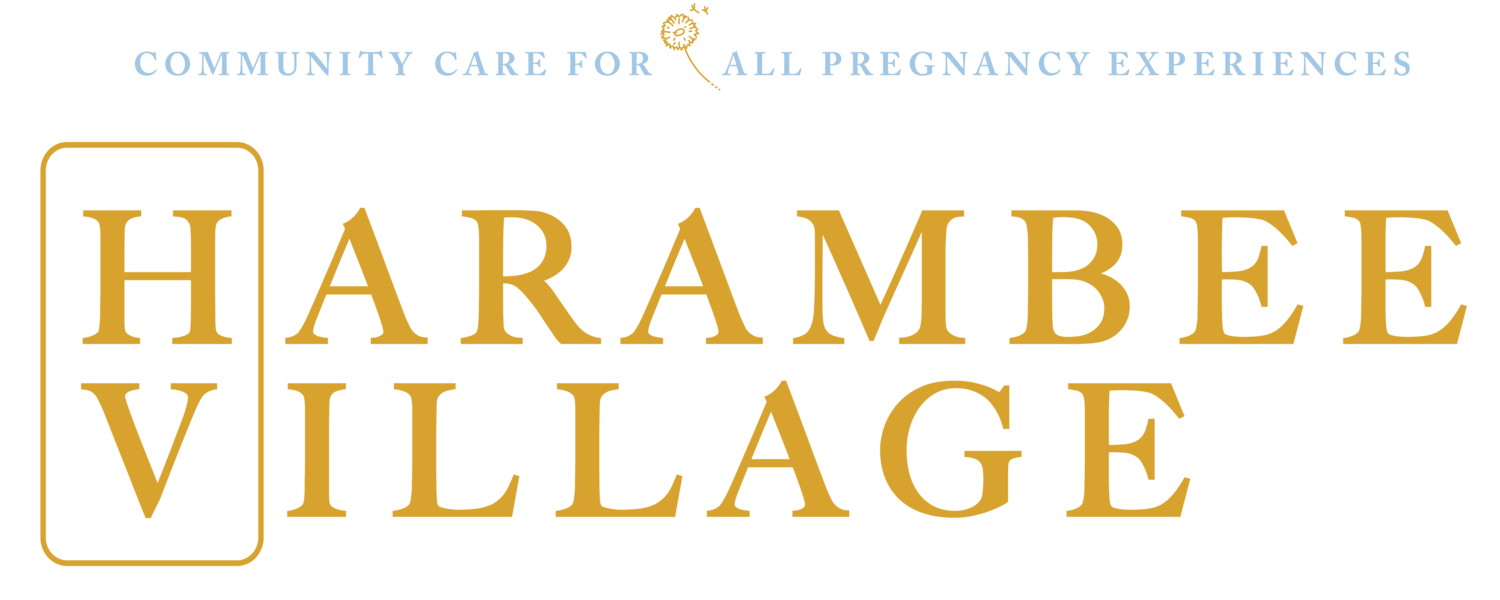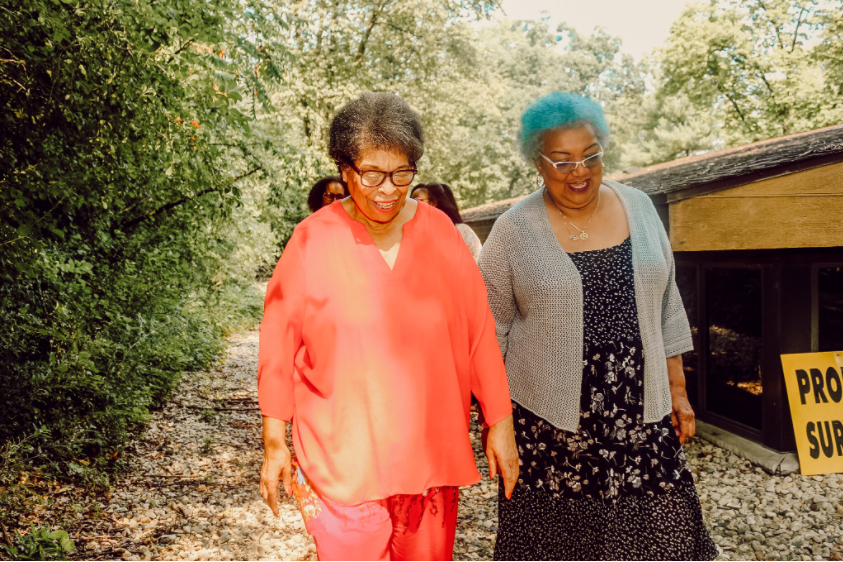The Long Game
It is with great pleasure that we will soon be able to announce the opening of the Harambee Birth & Family Center (HBFC). However, we would first like to take a moment to reflect on the history of its creation and share with you the story behind it— the long game.

Its Inception
In 1990, Mayor Paul Soglin and the Madison Department of Public Health brought service providers and community residents together to provide needed services and build community. This collaboration operated out of a renovated bowling alley on Park Street and became “The Harambee Collaboration”. This entity was committed to “leveling the playing field” of decision making which ensured that residents had a say in the delivery of services and governance. They were not “on the outside looking in” or told what was best for them. Service providers involved them in decision making, listened to what they had to say and were guided by their wisdom.
Bringing education, information, resources, and family support to neighborhoods is the blend of initiatives that make up “the long game” that will provide well-being (improved health & job attainment), positive self-esteem (opportunities to realize potential), and caring (stakeholder ability to change the community) that combine to cause a shift in control and power for neighborhoods and impact quality of life for residents.
Investing in the “long game” of eliminating conditions such as racism, segregation and poverty, access to education, social support and adequate healthcare can make major changes that impact the well-being of residents who are forced to live in under-resourced neighborhoods.
Its Impact
The Harambee Center partnership provided a comprehensive “one-stop” family support and health services, creating positive outcomes for families and individuals. The Center was located in an area with a high concentration of low-income housing and was also “the historical heart” of Madison’s African American community. This neighborhood had a strong tradition of helping others and in keeping with this tradition, the family resource center that was located there extended this opportunity to young families who wanted to do the best they could for their children and their neighborhood. Because of the partnership with the following members of the collaborative and two governmental health departments (at this time, Madison City Public Health and Dane County Public Health were the two entities), systems change took place and major implications in the improvement of health outcomes and support for young families took place in this community.
For example, for more than two decades, infants born to African American women were much more likely to be born preterm or small for gestational age than those born to white women. This disparity had been most persistent and distressing in Wisconsin, with infants born to African American women 3-4 times more likely to die before their first birthday than infants born to white women. However, starting in about 2002, an astounding decline in African American infant mortality was noted in the population of Madison, Wisconsin and surrounding Dane County. Up until, 2008-2009, African American infant mortality in Dane County continued to be comparable to those infants born to white mothers. This dramatic improvement could not be accounted for by a change in the way data was collected or categorized or through any easily recognized changes in clinical medical practice.
Its Legacy
The Harambee Center became a safe place for those new to the city who were looking for information and resources. Positive relationships between service providers and customers were built and there were opportunities for those same customers to become Harambee Board members or members of committees which ensured that their voices were heard and they had participation in governance. The goals of using multi-disciplinary approaches in a multicultural setting set the tone for family members to take responsibility for their own health care and to use the services that resulted in pro-active health care for families and children. For instance, translation services were provided for those who needed them, transportation to medical appointments was provided by Madison Health Department, and outreach for the Center was conducted by the Coordinating Office Outreach Team.
Unfortunately, Harambee was defunded and disbanded in 2009, ironically, this was the year that the county’s black-white infant mortality gap returned. Because of the politics involved in the “death of the Harambee Center”, politicians and decision makers refuse to acknowledge the groundbreaking work of Madison’s Harambee Center and its contribution to the dramatic drop in Black infant deaths and the mysterious irony of the closing of the Center and the spike in 2009.
Therefore, the mission of the new HBFC is to once again create a drop in Black infant deaths and improve birth outcomes & community health by providing access to community based, culturally situated, one-stop-shop, comprehensive, and holistic health care and family support for birthing families in Wisconsin. Thank you for supporting “the long game” and our efforts to make important gains and major changes.
A Birthing Home for the Marginalized
In the fight for birth equity, Harambee Village is convinced that the solution for equitable care will be found by providing access to a birth center run by providers, doulas, and women of color. Especially a birth center that has an unwavering focus on community-based care, safe birthing, and culturally-inclusive maternity care for all birthing experiences.
Our Birth Center Difference:
[Miss Betty Banks (LEFT), Miss Hershey Barnett (RIGHT)] During the late ’80s and throughout the early 2000s both the historical and profound work that was done on Madison’s southside was championed by what was then called the “South Madison Health & Family Center” (SMHFC).
We know the Harambee Birth & Family Center will work because its worked once before!:
When the South Madison Health and Family Center (SMHFC) was active, Dane County witnessed the deepest decline in black infant mortality and black preterm birth rates (Figure 1).
“It was the first known example of the black-white gap closing in any one state or county,” read a Newsweek article titled “A good mystery: infant-mortality drop in Wisconsin.”
A special THANK YOU to our donors
Village Level ($5,000+)
Mary and Claire
Mother's Milk Alliance
Ryan McAdams
Allies For Black Lives
Dr. Amy Gilliland
Culinary Ladies Collective
Freedom Inc.
EPIC
Advocate Level ($1,000+)
Martha & Tim Coughlin
Tehmina Islam
Natalee Hartwig
Katherine Breitenmoser
Anne Eglash
Sreenath Pillai
Allison Couture
Fiona Weeks & Pepe Barros
Erin Frassetto
Anastasia Duherty
Lindsey Lund
Janna Hack
Wisconsin Guild of Midwives
KJ
Hannah Bernard-Donals
Daniel Statterman-Scanlan
Eleanor McEntee
Kerry Kretchmar
Madison Psychiatric Associates
Glass Nickle Pizza
Wildwood Family Clinic
Supporter Level ($250+)
Larissa Duncan
Meriter Birthing Center nurses and Staff
iFundWomen Pay-it-forward
Libby Hallanger
Maria
Sheba McCants
VF
Lucy Jiao Wyse
JMG
Noah Webster
Rebecca LeBeau
Kate CPM, LM
Lora Wiggins
Anna Kaminski
Ryan Hartkopf
Laura Berger
Jen Perfetti
Annie Menzel
Alleta Maier
Peppin Karras & Maureen Donahoe
Liese Harter
Amy Hilgendorf
Jennifer Lynne Wernimont Wrenn
Marianne Siess
Jamie Hawkins
Gary Garbanzo
Deirdre Sanford
Britt Wanta
CK
Meg Collins
Aimee
Debra Studey
Paris Wicker
Johanna Hatch
Ana Alexander
Emma Carr
Kate Holl
Jahmese & Troy Williams
Allan Allweiss & Emily Corbett
Megan Bjella & Ian Aley
Samantha Garcia
Stacy Huegerich
Tammy Peyton
Sara Kiiru
Anneke Kingery
The Stoner Fehsenfeld Family
Kelly Nelson
Bill & Kim
Alyssa Bruehlman
Edgewood Nursery Association Groups
Melody Bockenfeld




